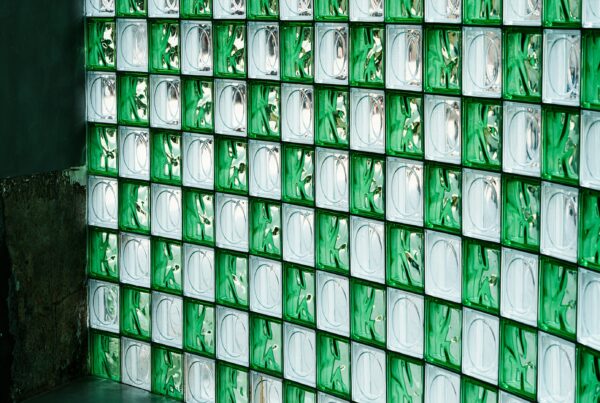The rise of eco-consumerism is increasing demands for sustainable construction. Residents are searching for ways to shrink their carbon footprints from home, improving environmental conservation. Builders can meet the market’s needs by investing in sustainable technology.
Environmental engineers, scientists and designers are improving the eco-consciousness of construction practices. Renewable energy systems, green materials, electric machines and more are enhancing the eco-friendliness of buildings. Before exploring the seven ways technology creates sustainable construction, assessing environmental limitations in the industry is essential.
Ecological Challenges Within the Industry
The construction industry is responsible for nearly 38% of carbon dioxide emissions globally. The air pollutants derive from excessive energy use, material manufacturing, machines, transportation and inefficient appliances. When greenhouse gases reach the atmosphere, they change its composition and ability to maintain surface-level temperatures.
Naturally, Earth converts sunlight into heat, warming its surface, collecting excess energy and sending it to space. The process creates the perfect temperature to promote the global ecosystem’s stability. Emissions disrupt the practice, increasing the atmosphere’s ability to create heat.
They also keep excess energy in the environment, filtering it back through the warming process. Greenhouse gases’ abilities to overproduce and trap heat increase Earth’s temperature over time. The enhanced greenhouse effect causes a plethora of ecological degradation ranging from water scarcity to marine species’ endangerment.
Construction professionals can practice environmental conservation by minimizing their emissions. Another challenge builders should evaluate is water pollution. Runoff from construction sites can carry toxic elements to rivers, streams and, eventually, the ocean.
Builders use volatile organic compounds (VOC) containing paints, cement, glue, diesel, oil and other contaminants throughout the construction process. When stormwater carries the materials to the ocean, it causes aquatic ecosystem degradation. The toxins can also seep into local groundwater, decreasing well water’s safety.
Various species may also consume construction runoff, creating adverse health effects. Professionals can reduce the industry’s air and water pollution using seven forms of sustainable technology. As builders transition away from environmentally harmful practices towards eco-conscious ones, we can successfully prevent other climate change impacts.
1. Solar Reducing Emissions
Solar panels are revolutionizing the ways society sources its electricity. Builders rely on energy to power tools, charge vehicles, illuminate the site and more. Professionals can invest in a solar power generator, shrinking a project’s carbon footprint.
Panels produce emission-less electricity from sunlight, a non-depletable resource, making the energy renewable. Because solar power releases zero greenhouse gases, it is more sustainable than fossil fuels. Construction professionals can also install solar panels on a building’s rooftop, minimizing its carbon footprint and improving sustainability rates over time.
2. Biodegradable Materials Minimizing Landfill Pollution
Traditional paints, stains and other coating liquids contain VOCs. When the compounds interact with nitrogen from regional emissions, they create ground-level ozone. The ozone produces localized warming effects, increasing the risk of heatstroke and other health challenges.
Companies began manufacturing paints without VOCs, reducing their ecological impacts. They also use biodegradable materials, helping paints and other liquids filter through the Earth instead of interacting with emissions.
3. 3D Printing Improving Building Efficiency
Human-powered construction practices leave room for error, damaging materials and decreasing a building’s energy efficiency. When professionals break certain items on-site, they generally throw them in the dumpster and grab new ones. Over time, the disposal of raw materials creates a significant waste pollution challenge.
3D printers are more accurate than humans, producing high-quality building parts. Individuals can also use the technology in modular construction, creating a tighter seal to minimize energy loss. They may additionally use recycled base materials in a 3D printer, further reducing its environmental impact.
4. Recycled Materials Decreasing Manufacturing Waste
Professionals also developed technological advancements, helping builders use recycled materials for their projects. A significant amount of landfill waste derives from the construction sector. Builders can increase the sustainability of their practices by giving materials a second life.
Cellulose insulation is a new product made from recycled newspapers. Manufacturers treat the material with borate, reducing its flammability and the interference of pests and mold. Construction professionals can also re-recycle the insulation after its use, creating a closed-loop.
5. Smart Appliances Improving Energy Efficiency
Builders can install smart appliances in a home, increasing its energy efficiency and reducing its emissions. Residential heating, ventilation and air conditioning (HVAC) systems produce nearly 441 million tons of carbon emissions each year. Smart thermostats can effectively reduce a system’s energy consumption and pollution production.
The technology accesses local weather readings through an internet connection. Then, it autonomously adjusts indoor temperatures to reduce unnecessary energy use. It also uses motion detection sensors, turning off an HVAC system in a vacant building.
6. Cool Roofs Limiting HVAC Emissions
Construction professionals can additionally add cool roofs to a building, further reducing HVAC emissions. The technology uses reflective materials, filtering sunlight away from a building and reducing stress on summer air conditioners. Rooftops with asphalt shingles may reach over 150° Fahrenheit during the daytime.
The high temperatures can significantly warm a home, producing higher HVAC emissions. Cool roofs can deflect heat instead of absorbing it, shrinking a resident’s carbon footprint and utility bill.
7. Rainwater Harvesting Systems Reducing Resource Exploitation
Builders may also improve the sustainability of a home by increasing water conservation. Installing a rainwater harvesting system can reduce an individual’s reliance on the conventional city supply. Recycling stormwater is more sustainable because it reduces runoff and freshwater exploitation.
The technology collects rainwater and snowmelt in large barrels. Then, the system either transfers the water to an irrigation device or a filter. Residents can utilize purified stormwater for cleaning and drinking, reducing resource depletion.
Supporting Sustainable Change
Individuals can support sustainable changes in the construction industry by working with companies using green technology. In America, we vote with our dollars, and funding an eco-conscious builder over a competitor can increase the demand for sustainability. An increased need for eco-friendly building practices can effectively decrease the industry’s emissions and surface-level pollution.










